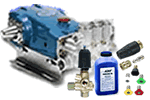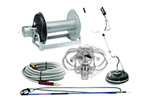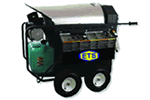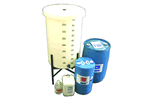Does the history of pressure washers and steam cleaners trace their roots all the way to Al Capone and prohibition?
By 1933, this epidemic of rebellion ultimately led to the Volsted Act’s demise as the “noble experiment” was dubbed a clear failure. Prior to that repeal, however, a young Pennsylvania inventor actively defied the laws of Prohibition, and through his resistance an industry was born.
It was sometime in 1926 when Frank W. Ofeldt II, an employee of a western Pennsylvania producer of gas-fired water heaters and boilers, made his breakthrough.
Ofeldt was busy piddling in his home’s garage, perfecting his design of a portable whiskey still for a local moonshiner, when he noticed an unusual phenomenon. As the gadget’s steam outlet aimed downward, a wet steam hit his greasy garage floor and the grease literally began to crawl. Because Ofeldt came from a family of pioneers in steam engineering, he recognized that steam alone – being a wholly gasified liquid lacking in mass or body – could relocate the grease but could not remove it. He detected the potential of his discovery, however, and quickly began his crusade to create a cleaning contraption that would mix his newfangled wet steam with chemical.
His pursuit led him to Homestead Valve Company in search of a pump casting.
“Frank Ofeldt was a neat guy. He was a brilliant, rough and ready engineer, too. But he had the marketing sense of a nit.”
Ofeldt and Homestead’s Schuchman joined forces and soon began developmental work on what was temporarily termed the “Hypressure Vapor Spray Generator,” for lack of a better name. Then a man named Mr. Eltinge – a brother of the world-famous female impersonator Julius Eltinge – wandered into the Homestead plant.
Other Technological Breakthroughs
Jenny is credited for building the very first positive displacement triplex pump with an oil-bath crankcase for steam cleaners, fabricated back around 1934. “We used it for moving chemicals in plants where they needed a husky, adjustable flow three plunger pump. Of course, then we had them on a few machines as well,” explains Don Gross who has been selling Jennys since the late 1930s (see sidebar). Due to cost concerns, Homestead later switched to a less expensive reciprocating piston pump around the late 1930s.









